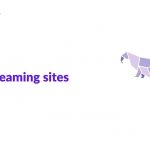E-mail is the most popular and functional way to communicate professionally. But sometimes, individual e-mails and conversations are not the best way to manage communications. It’s where the shared inbox comes in. Shared inboxes are designed to enable people to communicate easily with businesses.
Contents
- Advantages of a Shared Mailbox
- 1. Distribute high volume messages
- 2. Delegation of expertise
- 3. Eliminate double efforts
- 4. Consolidation and review
- What are the Specifications of the Shared Inbox Software?
- 1. Group-based e-mail management
- 2. E-mail automation
- 3. Ticket allocation
- 4. Team discussions
- 5. Reports and evaluations
- The Best Shared Inbox Tools Available at the moment
- 1. Hiver
- 2. Front
- 3. Outpost
- 4. Loop e-mail
- 5. Kayako
- 6. Keeping
- 7. Clientflow
- 8. Drag
- 9. Helpmonks
- 10. Gmelius
- 11. Mailclark
- 12. Missive
- 13. Helprace
- 14. GrooveHQ
- 15. Intercom
- Conclusion
1. Distribute high volume messages
For a start, high-volume e-mail flows are often unmanageable for a single individual. For example, if you get 5,000 customer service messages per day, no one can handle them independently. A shared mailbox enables many people to share the burden of one centralized mailbox.
2. Delegation of expertise
Shared inboxes also facilitate the conversion of messages to tasks and then the assignment of those tasks to the most relevant parties. This prevents messages from being overlooked or forgotten and ultimately contributes to higher customer satisfaction.
3. Eliminate double efforts
Shared inboxes prevent excessive duplication of effort, which can occur when two or more people reply to the same messages. Hypothetically, the assignment and monitoring of tasks should make that impossible.
4. Consolidation and review
Shared inboxes allow you to gather all your communications in one location for further analysis. Many shared mailboxes go beyond e-mail and integrate other forms of communication, such as social media messages and even live conversations. If you want to collect and analyze more data about your clients, that information is invaluable.
1. Group-based e-mail management
First, you will have a central location where more than one person can meet and manage e-mail communication. Anyone can see incoming messages, and people can respond to them as needed.
2. E-mail automation
Many modern platforms also have at least some capability to automate e-mail responses, decreasing the amount of time you need to spend manually creating messages and leading to higher e-mail efficiency.
3. Ticket allocation
Most platforms here let you convert each incoming message into a “ticket” or “task” that can be assigned to a specific person on the team. Doing so avoids duplication of effort and minimizes the risk of skipping a message.
4. Team discussions
Sometimes customer messages are too tricky for a single person to sort by. Many shared mailbox platforms include a sort of internal team chat function to solve this problem, so people can work together to solve problems.
5. Reports and evaluations
You’ll also typically come up with some kind of reporting or analytic functionality. It enables you to measure things such as incoming and outgoing messages, response rates, and even client satisfaction.
1. Hiver

It’s also one of the most secure shared messaging solutions because e-mail still stays on Gmail servers.
2. Front

3. Outpost

4. Loop e-mail
Loop is an e-mail management center that also offers transparent team messages in typical inboxes. Loop provides quick access to daily team performance reports and messaging. It also offers standard collaboration functions such as e-mail assignment and chat collaboration.
5. Kayako

6. Keeping

7. Clientflow

8. Drag
This app is designed to help you manage messages and tasks in Gmail. It provides access to a Kanban-style layout. As the name implies, its primary interaction mode is drag and drop. It doesn’t take long to learn, and it has a team chat in-house to clarify misunderstandings and allow for easier collaboration.
9. Helpmonks
If you like to host your shared inbox on your own server, Helpmonks, with data storing capabilities, is one of the few tools that can do that for you. It is budget-friendly and includes typically shared inbox functions such as internal notes, e-mail allocation, and collision alerts.
10. Gmelius

11. Mailclark

12. Missive

13. Helprace

14. GrooveHQ

15. Intercom

Conclusion
In these times of covid where physical communication has become almost impossible. It is imperative to find alternative features for our professional life, which has become highly chaotic due to online communication. To simplify the chaos and have a more efficient way of functioning, these different shared inbox software can go a long way in making our life easy.















